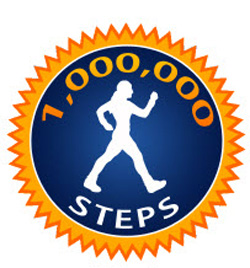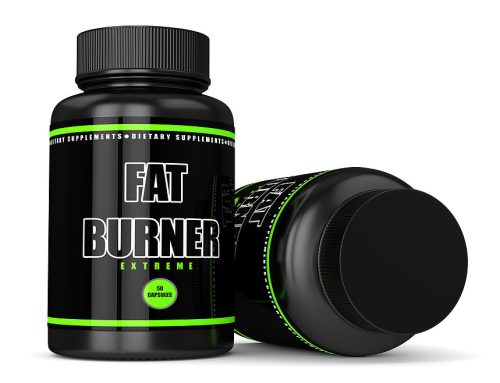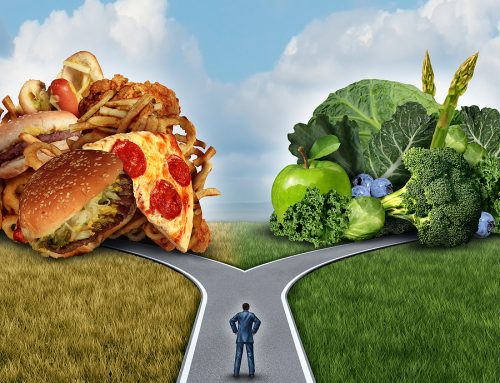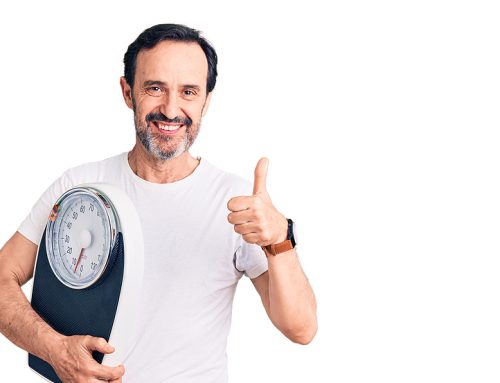That person you know who seems to eat anything but still stays skinny? You might think he was genetically gifted with a fast metabolism. The truth is, he probably wasn’t. One of the biggest reasons thin people burn more fat is because of something else entirely different – they have a high level of NEAT.
Or, you might think that the person you know who seems to eat like a bird but is still overweight because she was genetically cursed with a slow metabolism. Again, usually not the case. One of the biggest reasons people are don’t burn more fat (or have trouble losing weight) is because they have a low level of NEAT.
If you’re familiar with NEAT, that’s excellent, and periodic reminders are important so keep reading. If you don’t know what NEAT is, it’s something you’ll want to start paying attention to. Either way, here’s the good news: If you increase your NEAT (it’s simple with the tips in today’s post), you can burn more fat without even dieting. That’s because NEAT isn’t about dieting – it’s about moving.
 NEAT is an acronym for the entirely too long name, Non-Exercise Activity Thermogenesis. It includes all your physical movement throughout the day, not counting your “official” workouts.
NEAT is an acronym for the entirely too long name, Non-Exercise Activity Thermogenesis. It includes all your physical movement throughout the day, not counting your “official” workouts.
NEAT is all the calories you burn from casual walking, shopping, yard work, housework, pacing around, and standing around (being up on your feet instead of sitting). It even includes tiny little things like changing posture and fidgeting.
Scientists have confirmed that NEAT is one of the biggest reasons there’s so much difference between individuals in how many calories they burn every day.
Dr. James Levine, an endocrinologist and top researcher in the field says:
“Obese people move 2.5 hours less per day than lean people. This means they burn roughly 350 fewer calories per day.”
For most people, NEAT accounts for about 30% of physical activity calories spent daily. But NEAT can run as low as 15% in sedentary people and as high as 50% in highly active people.
Walking makes up the majority of NEAT. Obviously, the type of work you do is a big influence on NEAT as well. If you work at a desk all day long and hardly get up, your NEAT level is low. If you deliver mail, or work any type of physical job, your NEAT can be quite high.
The fact that most people sit all day long and surf the web, watch TV and play video games is not a minor factor in the obesity problem. We have become a desk-bound, technology-based society. 150 years ago, 90% of the world’s population worked in agriculture or did some type of physical labor to earn a living.
“The human body evolved over a million years. But the car-computer-chair-elevator-television-based world has evolved in less than a century” says Dr. Levine. “So you’re imposing a massive environmental change on a very old biology. No wonder it all goes haywire.”
Short of changing your job from desk jockey to lumberjack, you may be thinking that NEAT is too trivial to amount to anything. If you looked at it one activity at a time, you’d probably be right. However, when you look at it from the long term perspective, and when you make small changes in daily activities that become a habitual part of your lifestyle, it accumulates over the weeks, months and years.
In fact, it can add up so much that it’s a big mistake to focus all your attention on how many calories you burn during your formal cardio or lifting sessions, while completely ignoring all the moving around you do rest of the day. If you focus on moving more throughout the whole day, you can often crank up your calorie burn to a whole new level that will help you stay a whole lot leaner.
You can implement a NEAT strategy by thinking about simple ways you can become more active – outside of your regular workouts – and including them in your daily behavior goals. Here are some ideas:
- Take the stairs instead of the elevator.
- Park in the back of the lot, not the front.
- Stand or pace more instead of sitting. (Tip: Even in between sets when you’re in the gym lifting).
- Get a desk treadmill (“deskmill”) or mini-stepper.
- Get out of your chair and walk around, stretch or do some body weight exercises on the hour, every hour while working at your desk. (Fitness trackers like the FitBit Charge 4 will nudge you do that).
- Do not use labor saving devices all the time (riding mowers, leaf blowers, snow blowers, golf carts, electric bikes, and so on.)
- Do some of your own house or yard work.
- For short local trips and errands, walk instead of taking a cab or driving.
- Look for other opportunities to walk more (walk your dog, for example).
- Spend less leisure time watching TV, surfing the internet or playing video games, and more time engaging in physical recreation, sports, boating, cycling, hiking, and so forth.
- Watch less TV, unless you’re watching it on a treadmill or stationary bike.
- If you have kids, get as much physical activity with them as possible.
- Be aware of seasonal variations, especially if you live somewhere with harsh winters. The difference between summer and winter activity can vary two-fold! (It’s not just holiday food that causes winter weight gain – it’s also low NEAT).
Out of all these tips, do your best to spend less time in a chair and more time walking. You may even want to invest in a fitness tracker (pedometer), which will tally up your steps every day. The Fit Bit Charge is one of the most popular
![]()
A study published in the American Journal of Health Promotion found that in previously sedentary overweight adults, subjects who met a 10,000-steps-per-day goal saw large improvements in body composition. Those who missed their goal did not.
In fact, there is now a “Hierarchy of stepping” which has been published in scientific journals (these figures do not come from the fitness tracker industry):
1. 5,000 steps per day or less (sedentary)
2. 5,000 – 7,499 steps per day (low active)
3. 7,500 – 9,999 steps per day (somewhat active)
4. 10,000 – 12,499 steps per day (active)
5. 12,500 steps per day or more (highly active)
So yes, it’s true – the popular 10,000 steps per day recommendation does have scientific support.
Also consider the older order Amish culture where modern labor-saving technology has not been fully adopted. Among these Amish, the obesity rate is only 4%, compared to 30% in the USA overall. A study published in Medicine and Science in Sports and Exercise reported that Amish men walked an average of 18,425 steps per day and women 14,196 steps per day. The average American only logs in between 5,000 and 6,000 steps a day.
That’s a difference of 400-600 calories per day which gives us a good approximation of how physical activity has changed as technology has advanced over the past century.
Most interesting of all, the meals of the Amish were not low in carbs or low in calories – they included meat, eggs, gravy, potatoes, bread and even pies and cakes – they didn’t diet. The Amish stayed trim by balancing their food intake with high activity.
There’s a common misconception among some trainers and serious fitness enthusiasts that if an activity isn’t high in intensity, then it’s worthless for fat loss. Research studies like these prove that this isn’t true at all and that walking is an effective way to beat body fat, if you do enough of it.
This is one of the many reasons that for years, I’ve been sponsoring fitness contests that focus on increasing your step count every day. To find out about the next “Burn The Fat 1 Million Step Challenge” that you can enter, check out the Burn The Fat Challenge Contest Calendar

Tom Venuto is a natural bodybuilding and fat loss coach. He is also a recipe creator specializing in fat-burning, muscle-building cooking. Tom is a former competitive bodybuilder and is today a full-time fitness writer, blogger, and author. His book, Burn The Fat, Feed The Muscle is an international bestseller, first as an ebook and now as a hardcover and audiobook. The Body Fat Solution, Tom’s book about emotional eating and long-term weight maintenance, was an Oprah Magazine and Men’s Fitness Magazine pick. Tom is also the founder of Burn The Fat Inner Circle – a fitness support community with over 51,000 members worldwide since 2006. Click here for membership details







Dear Mr Venuto.
It is very true that walking burns fat.
It is also very true that high intensity exercise burns sugar.
When you start to run, the body switches from burning fat, to burning sugar in the blood, as it cannot convert the fat quickly enough to provide your muscles with the energy they require for this level of exercise.
This is why it is common for Marathon runners to ‘hit the wall’. The sugar level in their blood drops so low it cannot feed the muscles any more, no matter how determined you are, your body will not function.
Not until it has converted some of your body fat to blood sugar again, or food, then you are off again.
Rather as if the sugar in your blood is the fuel in the tank of your car, and the fat is the emergency container you carry.
The emergency fuel will not feed your car until it is actually in the tank, but by putting it in the empty tank, you have lightened the load in your car, which is basically weight loss.
The basic principle of weight loss is, if you do not put it in your mouth and swallow, you will never put on weight’!
Moderation is the key to most success and happiness.
Stephen D. Woods-Shepherd M.Sc., B.Sc.(Hons.)
Nicely said Stephen, I agree with you one hundred percent! People need to work up to jogging/running. If your workout is too intense, your body switchs out of fat burning mode and excercise becomes anaerobic.
The Amish reference was priceless! These folks maintain a 4% Obesity Rate despite that they invented the Pennsylvannia Dutch all U dare to eat buffet! It shows the true value of the NEAT component.
I actually know a trainer that replaced his desk chair with a fit ball to take advantage of the calorie burn/core stimulation while doing paperwork. Of course I would get laughed out of the office for doing that, but, that doesn’t mean there aren’t other more corporate friendly things I can do.
I got in trouble at work when I got a gaiam ball chair. It was SOOO much fun to sort of balance and bounce (just a little) all day, but it didn’t fit the corporate culture.
Walking is awesome for burning fat! Remember that burning fat is an aerobic process; your body requires adequate oxygen in aid to eliminating its fat stores. We want to remember to do our cardio at an intensity level where we are breathing enough to still be engaged in conversation, at level where it’s not comfortable but not uncomfortable.
Most treadmills have built in heart rate monitors that allow us to stay within the fat burning zone which is right around sixty to seventy percent of your maximum heartrate! Just remember to look up the reccommended heartrate levels for your age and if there isn’t a chart available at your place of excercise, you can always consult a physician!
I’m always amazed looking at black-and-white photos of people from a long time ago; hardly any of them are overweight.
Just as you pointed to the Amish who walk significantly more steps than the average American, so many of those people in the B&W photos were tending farms, walking to/from work, or some other pre-television sedentary activity.
Your article reiterates once more, the importance for us to find activities in which we stay moving.
All the best,
Thanks Tom. Your news and process supports my intuitiveness regarding weight and fat loss. Still trying new things all the time. It is after all, a lifetime proposition. Thank you for the updates. Blessed to be fit at 57. Cheers, Reed
Increasing your daily physical activity outside of your formal workouts not only burns calories, it also helps you develop a healthier mindset and lifestyle.
ANY exercise is grist for the mill.
There is no such thing as any form of exercise being “worthless.” Some exercises are obviously more efficient and effective than others but they all are better than sitting on your butt all day. At least your burning calories and bolstering your cardiovascular system, even if the activity is not high intensity cardio.
I started taking the stairs instead of the elevator last week. Usually up in the morning. Sometimes I go up in the afternoon as well. It is 26 floors and takes about 8 minutes while reading or 6.5 minutes if I make an effort. It is about 630 steps or so if I take them one at a time.
I really wish I discovered the stairs sooner.
like
Very interesting always willing to try new things to better my fitness level!
Thanks!
Wanted to get your feedback on this quote from Jonny Bowden:
“The real secret of increasing fat loss is to create a hormonal environment where insulin isn’t elevated”
For those of us who work out a ton and it doesn’t move the needle as much as it used to, this hit home.
The real secret of fat loss is making sure you achieve and maintain a calorie deficit. And since you’ve posted slightly off topic, let me bring it back to topic of this post by pointing out this is the very reason NEAT is so impactful. If you work out a ton and it doesnt move the needle, try double checking your calories FIRST before going down other paths… you can out eat ANY amount of exercise!
Hormones absolutely have a major impact on body composition, as many hormones can influence appetite, metabolic rate and the partitioning of nutrients which influences what kind of weight you gain when you gain weight (muscle or fat) and what kind of weight you lose when you lose weight in a deficit (muscle or fat). However, controlling the hormone insulin in particular is not the secret of fat loss.
The insulin hypothesis is a favorite of people in the low carb community, and while insulin IS anti lipolytic and lipogenic, that is taken out of context and misunderstood – it doesnt mean insulin makes you fat or causes obesity in a cause and effect sense. Low carb diets are a totally valid approach, arguably more effective for some people than any other approach, BUT, the experts in the low carb community will gain more respectability that low carb approaches might deserve only when they stop saying outright or implying that calories dont matter or insulin is the problem.
To the previous poster talking about fat-burning mode vs sugar burning mode… the energy balance equation still holds true in either situation. Which type of exercise to choose should not be subordinated to whether the majority of calories burned comes from fat or sugar.
Tom, great article! Reminding myself of the energy being burned is a great way to feel better about doing those weekend household chores. Also, I made a deal with myself that whenever I sit down to walk television, I always have to do a few sets of body-weight exercises…. sit-ups, pull-ups, push-ups, etc.
This was a very thought out article and the logic is sound.
It also shows there are a few things that we need to do to take advantage of this:
1) Strength train…because after all we all need to be burning more calories BETWEEN our workouts. And the only way to do that is for us to build muscle to make our bodies more efficient at fat burning.
2) I would suggest that the calorie deficit is easier to achieve if we all stopped drinking so many calories a day. We drink hundreds of calories a day, whether from lattes, cappuccinos, alcohol and soda. How much weight could be lost if we were to all save 300 calories a day…or more…from skipping these drinks and just drinking water and green tea?
Not being a driver, I tend to walk a lot; I prefer it, it’s just something I do without even thinking about. I have never had a weight problem and I am still a size 8 (a 6 in US sizes I think) at 46. I eat very well and I am able to eat more than most which I put down to a lifetime of staying actve. People think I am crazy to prefer walking but I just don’t understand the mentality of people who never take any exercise.
Also, don’t forget sleep. Most people are sleep deprived and that is not good for your waistline (or your heart) at all.
Great post! Couldn’t agree more.
We all want instant results so we do too much too soon, find it too hard, then lose motivation.
It seems the best way it to take it little by little, one day at a time.
Great article Tom. In the past I did exactly what you said – overlooked low-intensity exercise.
Research seemed to suggest that whilst this type of activity is most EFFICIENT for fat loss (a high percentage of energy coming from fat via fatty acid beta-oxidisation), it is not the most EFFECTIVE, due to the low numbers of calories burned. High intensity exercise, such as weight training or sprinting, that favours using glucose as fuel, burns many more calories per hour, and is therefore best for fat loss.
And so I neglected my NEAT and thought walking wouldn’t help me lose fat. I was wrong. Now I know:
1) Calorie deficit is key, no matter how those calories are used up.
2) You may workout 1 hour a day but NEAT occurs the other 23! Burning 300-500 extra calories per day through NEAT really IS worth it when losing fat. It does help you achieve your daily calorie deficit.
For anyone struggling to get their NEAT up, have a look for iPhone apps. I recently downloaded one for walking. Somehow being able to see how far I’ve gone and an estimate of calories burned keeps me motivated.
Good tips Tom (and very interesting fact about Amish)! I always say that even small changes can produce big results, especially when they add up. I believe that one of the most important keys to increasing your calorie expenditure is having a hobby which requires you to be very active such as cycling or hiking.
Friday is my chores day. Cleaning the house, washing, ironing, tending to the garden, and that’s on top of my normal exercise routine. I always make a point to weigh myself weekly, and do this on the Saturday after, as I know I will have benefited from a great all-day work-out the day before!
Refreshing to read an article about sitting down doing harm to you and then explaining how to sort it out. I’ve seen a few things recently about the dangers of sitting and it seems a lot of fear mongering without telling you explicitly how to make it better.. Thanks Tom and fellow commenters, looks like I’ll just increase the amount I walk to help :) much less terrifying
Thanks for the reference to’Insufficient sleep undermines dietary efforts’
Look out for ‘Physical activity and exercise in the regulation of human adipoise tissue physiology’ Thompson, Karpo, Lafontan and Frayn. in Physiological Reviewsvol 92, pp 157-191.
In this automated life, people are getting themselves involved less in manual work and looking for more assistance from technology. The only thing we need to do is to create balance in our daily activities plus in our eating habits as well. This will keep us healthy and away from these types of self created issues.
Wow, it is awesome when we are reminded of all the small things that help supplement calorie burning to help us reach our goals faster and more efficiently. I’m always telling my clients to remember that chores or activities around the house or work AREN’T the same as true exercise (strength training or cardio), but they do help supplement some extra calorie burning. In fact, one of my clients today said she raked the yard fast for about 45 minutes to get it done fast and turn it into a bout of exercise.
I work at a university and a couple of human movement academics have been working on NEAT for desk bound workers, they created exertime, a tool which can be loaded onto the PC and every 45mins the user is prompted to get up and move. Until you do and log the activity the user cannot use their PC. I had it loaded onto my PC this week, and I didn’t realise how deskbound I had been. They have created a lab with standing desks, tread desks etc and next year uni staff will be able to book time up to a couple of hours at a time to work from there instead of their own desks.
It has even inspired me to get up and about at lunchtime as I can log additional activity.
Looking forward to more exertime :)
[…] Stop looking for good parking spots. And start taking the stairs, too. If you’re looking to get fit, then you probably need more exercise. Just pick a damn parking space and walk to where you need to go. And if you can handle a flight of stairs, take them. There are good reasons to stay moving throughout the day. […]
[…] blog which speaks a lot of sense when it comes to general fitness and well-being. It includes this article containing some more tips for easy ways to increase your NEAT […]
Makes sense to take opportunities exercise as suggested, but to call it NON-exercise activity thermogenesis is pretty silly!
I think the name is a bit long, lol, but not necessarily silly. They are trying to make a distinction between various daily activities and “formal exercise” which can be very different. The only place I see a gray area is walking, which when done very briskly or uphill could certainly count as “formal” exercise. Walking from room to room in your house or even walking around the supermarket, I would consider N.E.A.T. not exercise. I think it would be sillier to call cooking and cleaning dishes “exercise” but that certainly counts as N.E.A.T. and its something people do every day
Cheers! Tom
Hi Tom,
Great article!!! At the UNM Medical School, new desk treadmills were installed in the Medical Library. Now students can study and walk at the same time!!! Very popular there. Take care,
Larry
Thanks Larry. Very interesting!
Hi Tom,
Tom may I please post your article to my health/fitness newsletter? I’ll also include a short bio of you and WEB address so my readers can subscribe to your blogs. Please let me know Tom. thanks
Larry
Fitness Tech, CHES
Sent you a message Larry!
I recently read this article from “Men’s Health http://www.menshealth.com/fitness/top-fitness-trend-2015 . It advocates more calorie burn by wearing a weighed backpack although it’s not clear how much of the suggested weight you have to carry to burn the extra 200 calories. Since I walk or run every day I’ve started to wear a backpack currently loaded with 20 lbs. of 2 standard 10 lb. weight plates. Most backpacks you find at sporting goods stores won’t handle 35 lbs. unless you spend a lot of money. I bought this one currently on sale at http://www.backcountry.com/gregory-z-30-backpack-1650-1920cu-in?ti=U2VhcmNoIFJlc3VsdHM6YmFja3BhY2tzIGhpa2luZyBtZW5zOjI6MTU6YmFja3BhY2tzIGhpa2luZyBtZW5z&skid=GRE002S-SPARD-M and it works great. It has an upper and lower compartment which distributes the load so it isn’t all hanging at the bottom end. I’ll be adding another 5 lbs. next week. Enjoy!
Hey Tom,
Great article! I had done my first project in college over a topic like this – trying to convince people to take the stairs more and walk more. It wasn’t very well received, but I suppose that’s just how college freshmen can be!
I’ll be bouncing around through your blog more – I’m loving these great topics, well written content, and unique ideas you’re presenting!
Shoot me an email sometime if you’d like to collaborate or work together in some way.
-Henry
Thanks very much.
Thanks for this post.
Good. Thanks
Is there a point where too much NEAT is too much? Or is more always better?
More of anything is rarely better. But a LOT more NEAT / activity /walking than the average person is doing is certainly better. Most people don’t move much – they are mostly couch bound and desk bound. It probably starts getting overboard where the amount of walking, exercise and activity you are intending to do is not practical to sustain. A good way to implement NEAT is in small ways that add up over the day, and then over time.